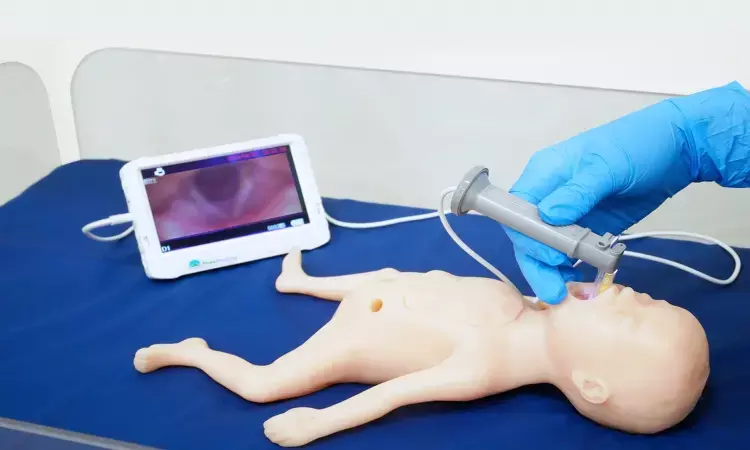- Home
- Medical news & Guidelines
- Anesthesiology
- Cardiology and CTVS
- Critical Care
- Dentistry
- Dermatology
- Diabetes and Endocrinology
- ENT
- Gastroenterology
- Medicine
- Nephrology
- Neurology
- Obstretics-Gynaecology
- Oncology
- Ophthalmology
- Orthopaedics
- Pediatrics-Neonatology
- Psychiatry
- Pulmonology
- Radiology
- Surgery
- Urology
- Laboratory Medicine
- Diet
- Nursing
- Paramedical
- Physiotherapy
- Health news
- Fact Check
- Bone Health Fact Check
- Brain Health Fact Check
- Cancer Related Fact Check
- Child Care Fact Check
- Dental and oral health fact check
- Diabetes and metabolic health fact check
- Diet and Nutrition Fact Check
- Eye and ENT Care Fact Check
- Fitness fact check
- Gut health fact check
- Heart health fact check
- Kidney health fact check
- Medical education fact check
- Men's health fact check
- Respiratory fact check
- Skin and hair care fact check
- Vaccine and Immunization fact check
- Women's health fact check
- AYUSH
- State News
- Andaman and Nicobar Islands
- Andhra Pradesh
- Arunachal Pradesh
- Assam
- Bihar
- Chandigarh
- Chattisgarh
- Dadra and Nagar Haveli
- Daman and Diu
- Delhi
- Goa
- Gujarat
- Haryana
- Himachal Pradesh
- Jammu & Kashmir
- Jharkhand
- Karnataka
- Kerala
- Ladakh
- Lakshadweep
- Madhya Pradesh
- Maharashtra
- Manipur
- Meghalaya
- Mizoram
- Nagaland
- Odisha
- Puducherry
- Punjab
- Rajasthan
- Sikkim
- Tamil Nadu
- Telangana
- Tripura
- Uttar Pradesh
- Uttrakhand
- West Bengal
- Medical Education
- Industry
Analysis of direct laryngoscopy versus video laryngoscopy in critically ill patients

Tracheal intubation is essential for managing the airways of severely unwell individuals. Around 80% of intubations in emergency departments and intensive care units globally are done with a direct laryngoscope. DL may provide challenges owing to several circumstances. These factors consist of a restricted mouth opening and the risk of cervical spine instability. Nevertheless, there is a continuing discussion over the effectiveness and safety of venous ligation in critically sick patients. Previous meta-analyses indicated no significant difference in first-attempt intubation success rates among critically sick patients. Several recent randomised controlled trials (RCTs) have been published, including the Direct versus Video Laryngoscope (DEVICE) experiment, which is the biggest trial to date and has shown encouraging results. An updated systematic review and meta-analysis of randomised controlled trials (RCTs) comparing videolaryngoscopy (VL) vs direct laryngoscopy (DL) in critically sick patients was recently published to address this topic.
The study by Zhao et al. aimed to provide a reevaluation of a previous systematic review and meta-analysis conducted by Araújo et al. The reevaluation included six additional randomized controlled trials (RCTs) that were omitted from the original study, thus increasing the total patient count to 4532. The meta-analysis result suggested that video laryngoscopy (VL) significantly enhances the first-attempt success rate compared to direct laryngoscopy (DL), with a relative risk of 1.12 and a 95% confidence interval. Furthermore, a Trial Sequential Analysis (TSA) also confirmed the improved first-attempt success rate with VL. The authors concluded that by expanding the sample size and increasing the number of studies, their reevaluation provided more comprehensive evidence-based evidence to support the use of video laryngoscopy over direct laryngoscopy in critically ill patients for endotracheal intubation. These findings have important implications for clinical practice, suggesting that video laryngoscopy may lead to higher first-attempt success rates and therefore should be considered in the intubation process for critically ill patients.
Reference -
Zhao, Y., Wang, Q. & Zang, B. A comparison of video laryngoscopy and direct laryngoscopy in critically ill patients. Crit Care 28, 27 (2024). https://doi.org/10.1186/s13054-024-04811-8.
MBBS, MD (Anaesthesiology), FNB (Cardiac Anaesthesiology)
Dr Monish Raut is a practicing Cardiac Anesthesiologist. He completed his MBBS at Government Medical College, Nagpur, and pursued his MD in Anesthesiology at BJ Medical College, Pune. Further specializing in Cardiac Anesthesiology, Dr Raut earned his FNB in Cardiac Anesthesiology from Sir Ganga Ram Hospital, Delhi.


